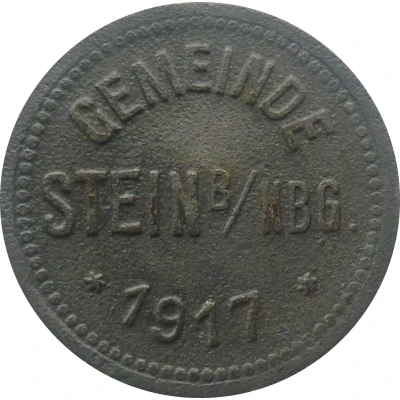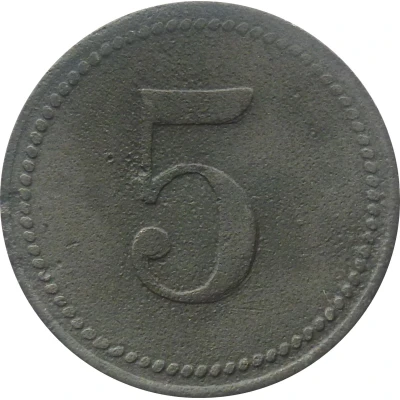


© Willem63 (CC BY-NC-SA)
5 Pfennigs - Stein bei Nürnberg
1917 year| Zinc | 1.3 g | 18.1 mm |
| Issuer | Municipality of Stein bei Nürnberg (Federal state of Bavaria) |
|---|---|
| Emperor | William II (Wilhelm II) (1888-1918) |
| Type | Standard circulation coin |
| Year | 1917 |
| Value | 5 Pfennigs (5 Pfennige) (0.05) |
| Currency | Mark (1914-1924) |
| Composition | Zinc |
| Weight | 1.3 g |
| Diameter | 18.1 mm |
| Thickness | 1.1 mm |
| Shape | Round |
| Technique | Milled |
| Orientation | Medal alignment ↑↑ |
| Demonetized | Yes |
| Updated | 2024-10-04 |
| Numista | N#353955 |
|---|---|
| Rarity index | 97% |
Reverse
Pearl rim, denomination centered
Script: Latin
Lettering: 5
Edge
Plain
Interesting fact
The 5 Pfennigs - Stein bei Nürnberg 1917 coin from the Municipality of Stein bei Nürnberg in the Federal state of Bavaria, made of Zinc and weighing 1.3g, is interesting because it was issued during a time of economic and political turmoil in Germany. The coin was minted in 1917, during World War I, when the country was experiencing severe economic difficulties, including inflation and a shortage of metals. As a result, the German government was forced to use alternative metals, such as zinc, to produce coins. This coin is a unique example of how a country's currency can be impacted by historical events.